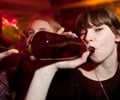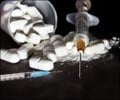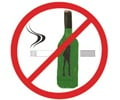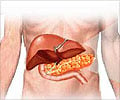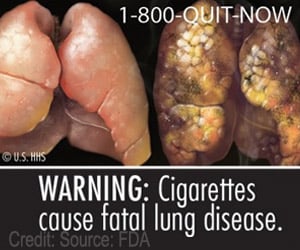Just 10 percent of drinkers account for more than half of Australia’s annual alcohol consumption, finds a new study.

‘Heavy drinkers purchase cheaper alcohol than other drinkers. Hence, interventions targeting cheaper alcohol may be effective with these drinkers to reduce per‐capita consumption and decrease alcohol‐related harm considerably. ’
Read More..




The study was led by La Trobe's Centre for Alcohol Policy and Research (CAPR), and funded by the Foundation for Alcohol Research and Education (FARE). Read More..
Lead author from La Trobe University, Dr. Michael Livingston, said the findings are concerning.
"We found that the heaviest drinking 10 percent of Australians drink 54.4 percent of all alcohol consumed in Australia", Dr. Livingston said.
"This group are drinking well above the NHMRC's low-risk drinking guidelines, which not only jeopardizes their health but has negative flow-on effects for families and communities."
Dr. Livingston said the study also showed that heavy drinkers are more likely to be middle-aged men living in rural and regional areas.
Advertisement
"We found that 16 percent of this heavy-drinking subset lives in outer regional and remote areas, compared with 10 percent of other drinkers." The study also found that the heaviest drinkers were more likely to drink cask wine and beer as their main drinks, and they were more likely to drink at home.
Advertisement
"Surprisingly, we found drinking patterns didn't correlate strongly with other socio-demographic factors such as employment status and neighborhood disadvantage," Dr. Livingston said.
FARE Chief Executive, Michael Thorn said the CAPR study reinforces the important role of regulating alcohol prices as a population-wide measure to reduce alcohol harm.
"This research provides important evidence that addressing cheap alcohol is a highly targeted way to reduce harm among Australia's heaviest drinkers," Mr. Thorn said.
This study further supports governments overseeing or considering introducing a floor price on alcohol, which is one of the reforms underway in the Northern Territory.
"The trend towards packaged liquor sales continues apace, with more than 80 percent of the alcohol consumed in Australia now sold as packaged liquor," Mr. Thorn said.
The alcohol industry maximizes profits through this business model, which includes discounts, special offers and other point-of-sale promotions like shopper-dockets.
"This is concerning as packaged liquor stores are linked with high rates of assaults, domestic violence, chronic disease, and road crashes," he said.
Mr. Thorn said chain superstores such as Woolworths' Dan Murphy's contribute to this harm, particularly in relation to the risk of trauma.
"An earlier study found that each additional chain outlet is associated with a 35.3 percent increase in intentional injuries (including assaults, stabbing, or shooting) and a 22 percent increase in unintentional injuries (including falls, crushes, or being struck by an object)," Mr. Thorn said.
Mr. Thorn said the superstore model enables Woolworths to sell as much alcohol as possible, as cheaply as possible, to the most vulnerable people in our country.
"Clearly the government has a responsibility to address the problem of cheap alcohol by fixing the way alcohol is taxed, introducing floor prices and halting the proliferation of harm-causing packaged alcohol sales," Mr. Thorn said.
Data for the study came from the 2016 National Drug Strategy Household Survey and the 2013 International Alcohol Control Study.
Source-Eurekalert

